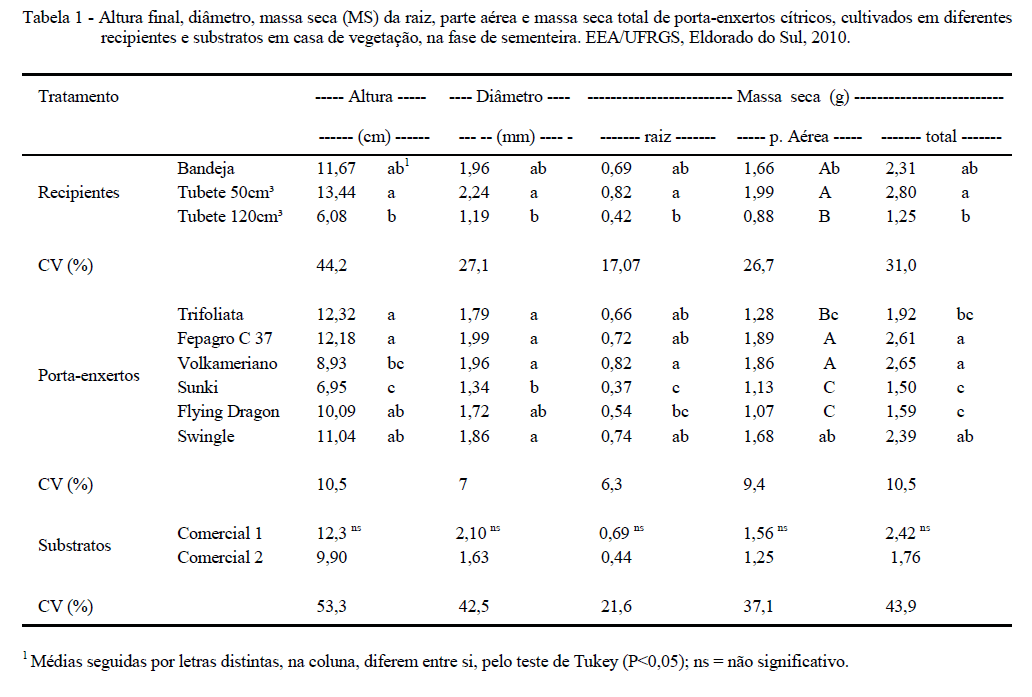In the production of citrus seedling, the knowledge of rootstock substrate and container is essential to define the entire substantial period to produce quality seedling. The objective of this research was to evaluate seedling emergence and vegetative development of six citrus rootstocks grown on two substrates and kept in different containers at the stage of sowing irrigated by capillarity. Two commercial substrates were tested and seeding was performed in three containers: stiff plastic tubes with 50cm³, stiff plastic tubes with 120cm³ and polystyrene trays containing 72 cells with a volume of 120cm³. The six rootstocks citrus evaluated were: Trifoliata [Poncirus trifoliata [L.] Raf.]; Flying Dragon [Poncirus trifoliata (L.) Raf. var. monstrosa]; Volkameriano lemon (Citrus volkameriana Pasq.), Fepagro C37 citrange [P. trifoliata x Citrus sinensis [L.] Osbeck.], Sunki tangerine (C. sunki hort. ex Tan.) and Swingle citrumelo (P. trifoliata x C. paradisi). The emergence, height and diameter of plants in the greenhouse were evaluated. Fresh weight, root and shoot dry weight, leaf number, leaf area per plant and leaf area per leaf were evaluated in the laboratory. In the evaluations of emergence of seedlings, the Sunki tangerine, Volkameriano lemon and Swingle citrumelo had higher rates compared to Trifoliata, Fepagro C37 citrange and Flying Dragon. When the system in a floating irrigation system, commercial substrate 1 is recommended for all containers. The commercial substrate 2 should be only used in alveolate trays of 120cm³.
propagation; greenhouse; vegetative growth; citrus

 Substrates and containers for the citrus rootstocks' production irrigated by capillarity
Substrates and containers for the citrus rootstocks' production irrigated by capillarity

